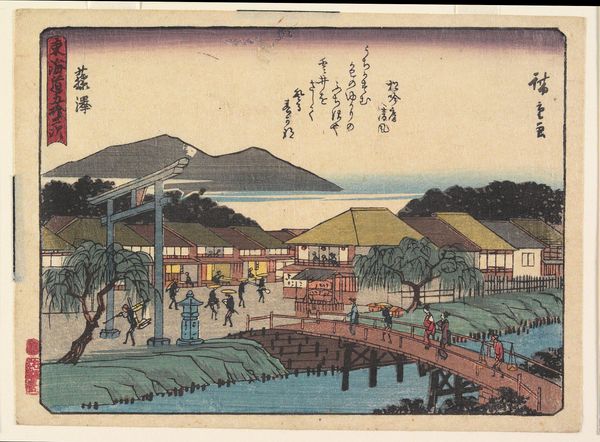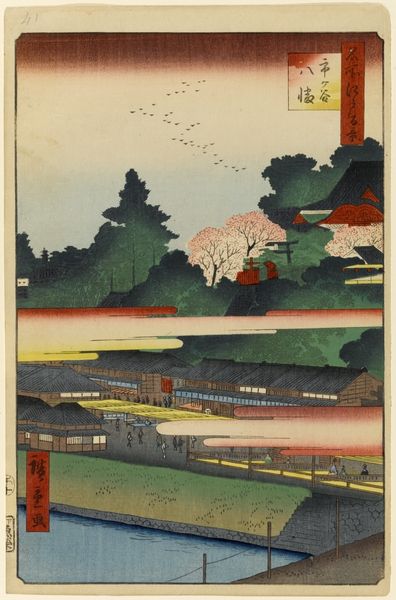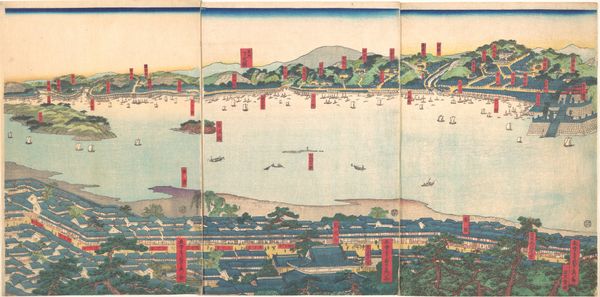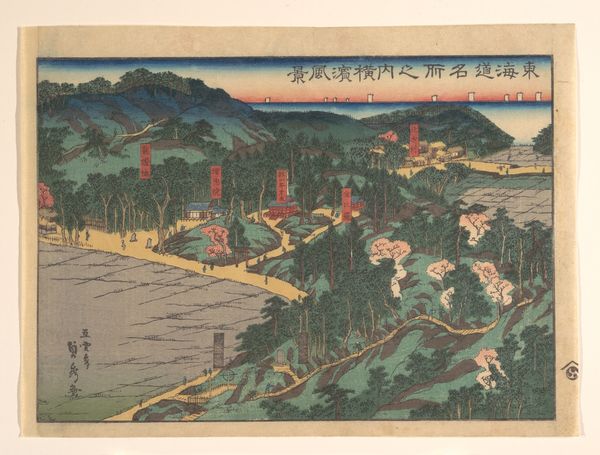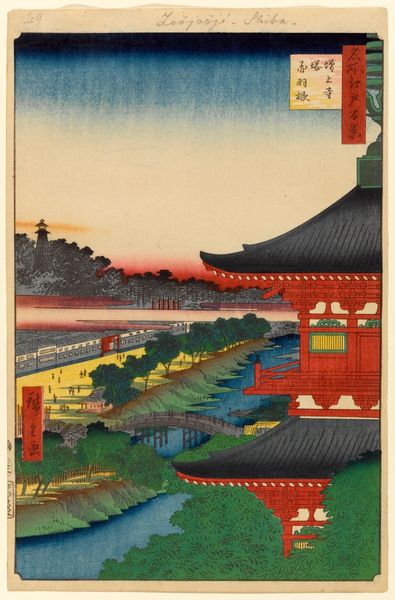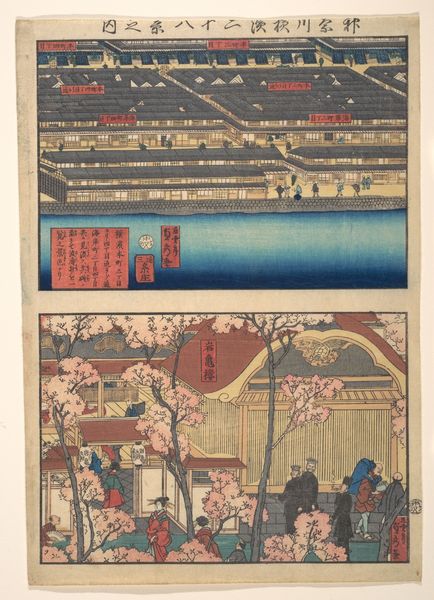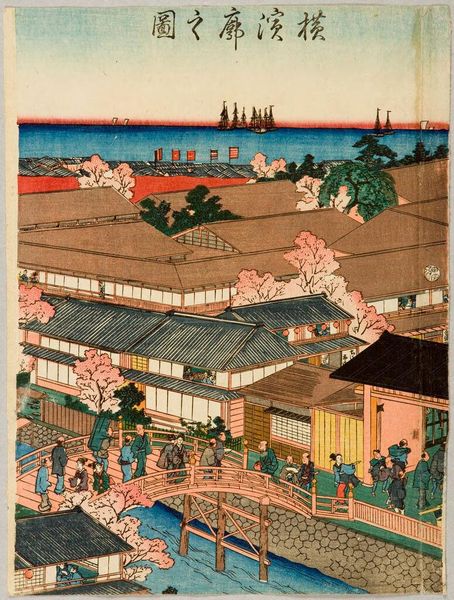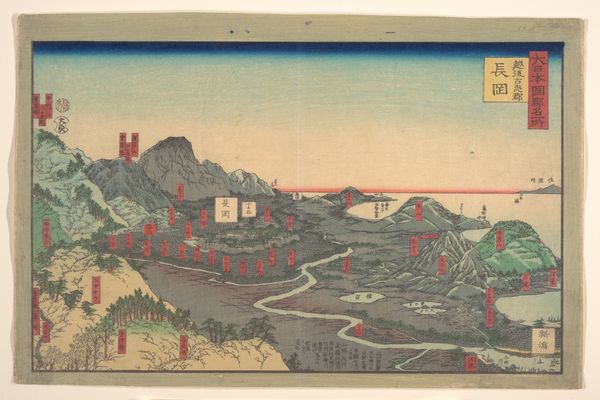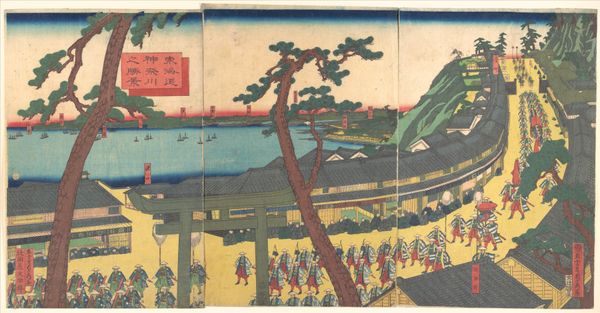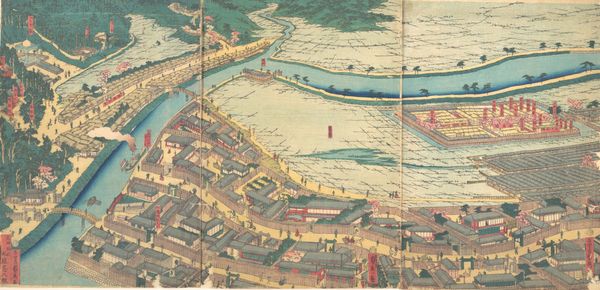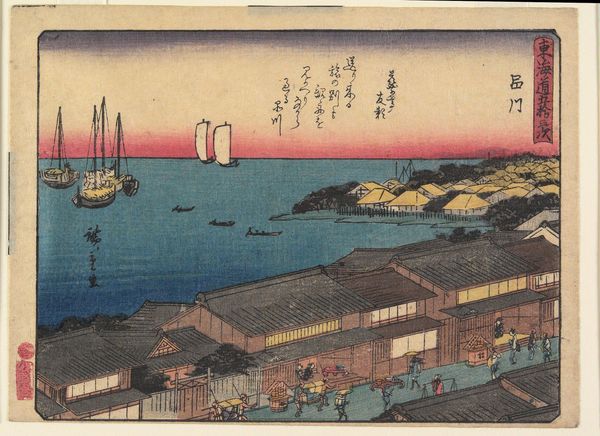
View of the Yokohama Pleasure Quarters of Kanagawa at Cherry Blossom Time 1860
0:00
0:00
print, woodblock-print
#
aged paper
#
water colours
# print
#
asian-art
#
landscape
#
ukiyo-e
#
woodblock-print
#
cityscape
Dimensions: Image (a): 14 3/4 x 9 7/8 in. (37.5 x 25.1 cm) Image (b): 14 3/4 x 9 7/8 in. (37.5 x 25.1 cm) Image (c): 14 3/4 x 9 7/8 in. (37.5 x 25.1 cm)
Copyright: Public Domain
Editor: This is “View of the Yokohama Pleasure Quarters of Kanagawa at Cherry Blossom Time,” a woodblock print by Utagawa Sadahide from 1860. The detail is amazing; you can almost hear the bustle of the figures crossing the bridge, framed by the delicate pink of the cherry blossoms. How do you interpret this piece? Curator: It's fascinating to consider this work as a window into a very specific moment in Japanese history, a moment of intense cultural negotiation. The print depicts Yokohama, a port city newly opened to foreign trade. Note the title itself; is it simply descriptive or also suggestive of a specific framing, especially considering the "pleasure quarters?" Editor: That’s interesting… a framing? Curator: Yes, the "pleasure quarters," in reality, functioned as a liminal space where cultural exchange occurred, though within deeply unequal power dynamics. Sadahide’s work then can be seen as more than just a landscape; it’s a representation of Japan grappling with its identity amidst increasing Western influence. The cherry blossoms, symbols of transient beauty, juxtapose against the implied permanence of foreign presence. What is being said about these transient pleasures within a changing landscape? Editor: So the beauty is almost a commentary on something bigger? Curator: Precisely. Think about the composition too: the elevated perspective gives a sense of control, but who really holds that control? Is it the artist, the viewer, the Japanese government, or the foreign powers exerting influence? And what narrative are they trying to craft in the process? Editor: I see... it makes you wonder what was left *out* of the frame as well. It definitely makes me look at it differently! Thanks! Curator: Indeed. Art like this allows us to understand how visual culture can negotiate identity and power within significant moments of societal transformation, inviting a critical engagement with both past and present narratives.
Comments
No comments
Be the first to comment and join the conversation on the ultimate creative platform.


